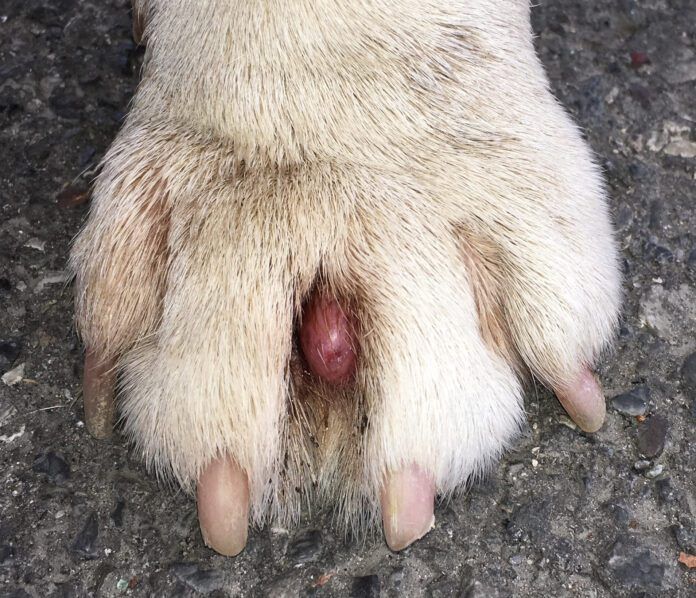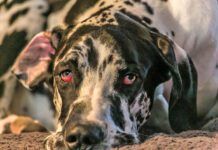Cysts are firm bumps that appear either in the skin or under the dog’s skin. They are, in a basic sense, a skin gland that’s gone a little crazy. They can appear pretty much anywhere there is skin. You may hear them called lots of different things like epidermal cysts, inclusion cysts, follicular cysts, keratinizing acanthomas, sebaceous adenomas, or pilomatricomas. But at the end of the day, a cyst is just a cyst, and it is a benign lesion, which means it is not harmful.
How to Treat Ruptured Cysts
Cysts can become problematic, however. Sometimes they break open and ooze or drain. Sometimes they get infected. Often, they are filled with cheesy-looking material (sebum). If you squeeze the cyst and it appears to empty, don’t expect it to go away. The lining of the cyst is still there and that is what produces the secretions that fill the cyst.
Leaking secretions allowed to build up around the cyst will irritate the surrounding skin. If your dog’s cyst is draining, be sure to keep the surrounding skin clean and dry. If your dog’s cyst becomes infected, your veterinarian will usually prescribe oral antibiotics. Warm compressing several times a day will help the infection drain.
How to Remove Cysts
Cyst removal on dogs involves surgery, and it is the only way to permanently get rid of a cyst. It is usually a simple procedure. Your dog will have stitches, may need to wear a cone around his neck to stop him from bothering the area, and will have to have restricted exercise for 10 days or so until the stitches are removed.
For sizable cysts, this procedure is usually done under general anesthesia, so if your dog needs his teeth cleaned ask if you can have this done at the same time. For smaller cysts, and for older dogs for whom general anesthesia is considered too risky, your veterinarian may be willing to remove the cyst with a local anesthetic.






Very helpful articles with pictures and graphics.